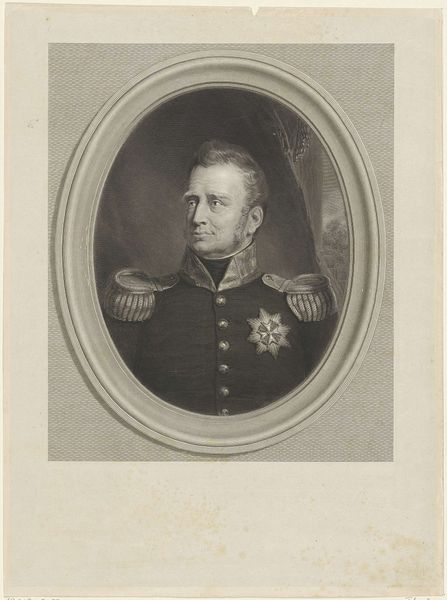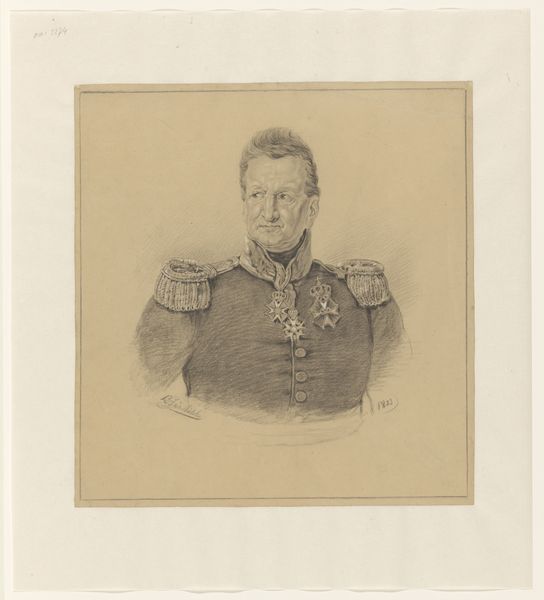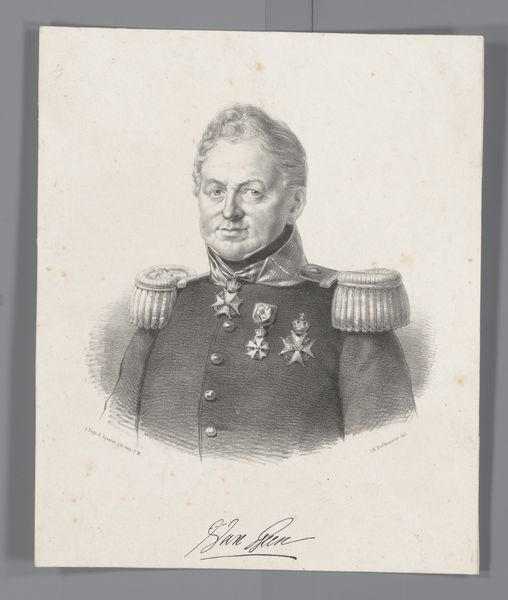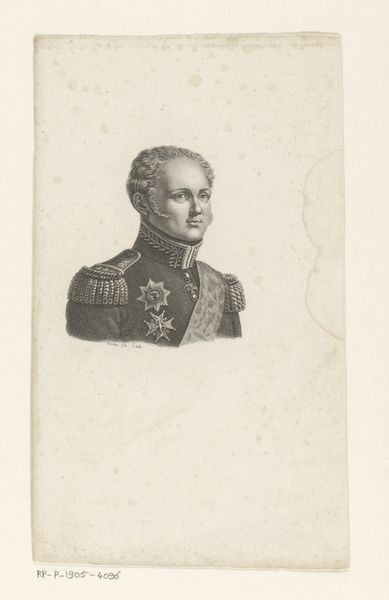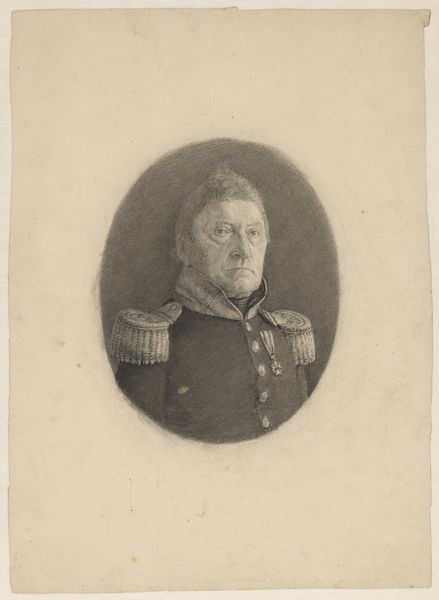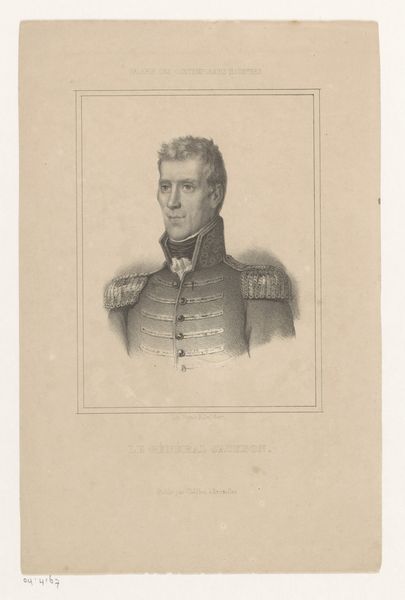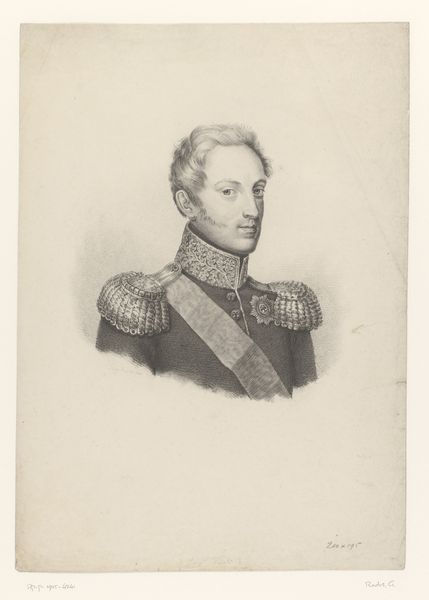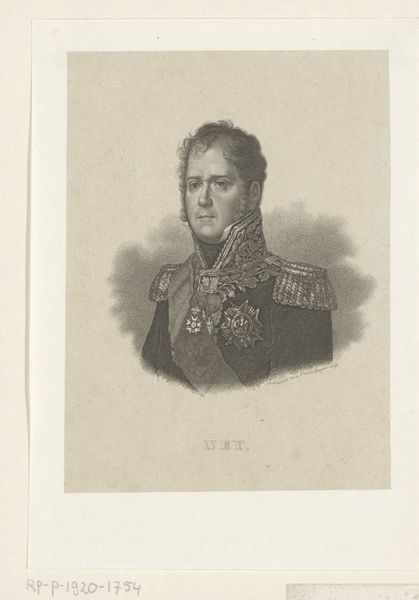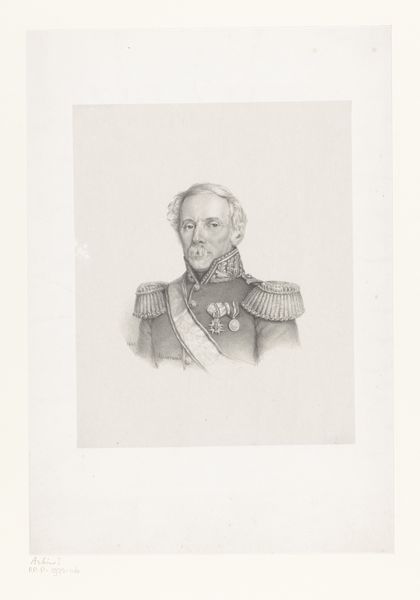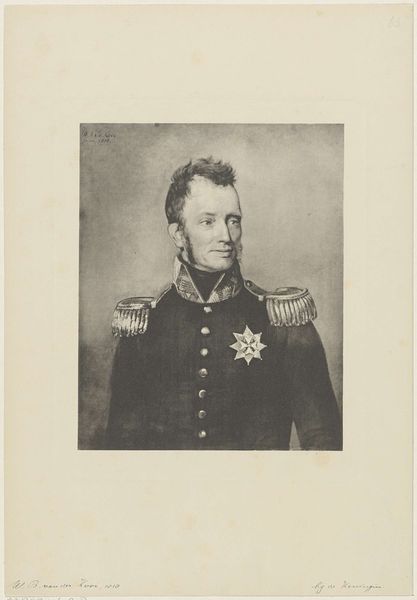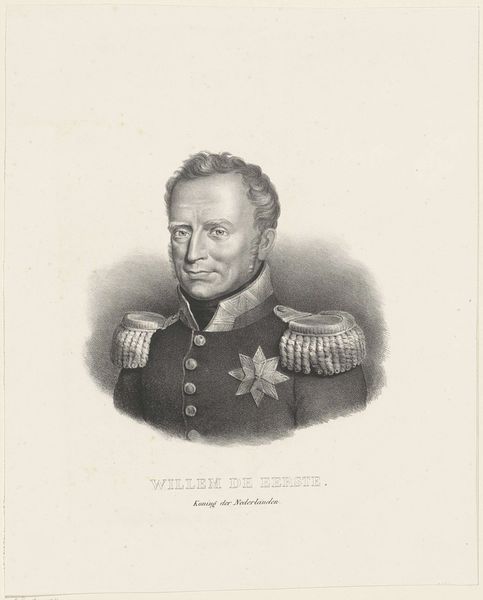
drawing, pencil
#
portrait
#
drawing
#
caricature
#
pencil drawing
#
pencil
#
portrait drawing
#
academic-art
#
realism
Dimensions: height 256 mm, width 216 mm
Copyright: Rijks Museum: Open Domain
Curator: Looking at this rather imposing image, we see "Portret van koning Willem I," a pencil drawing made in 1867 by Cornelis Sebille Roos. It’s now held in the Rijksmuseum. Editor: My first impression is one of restrained power. The pencil work is delicate, but the subject exudes a formidable air, even captured simply in grayscale. It’s a compelling balance. Curator: Indeed. It’s fascinating to consider the political and social context. This was a time of evolving monarchies, where rulers had to carefully project an image of strength but also accessibility. Drawings like this often circulated widely, shaping public perception of the King. Editor: The military attire speaks volumes. Those epaulettes and the star order; visual symbols of authority, duty, and perhaps, a connection to a lineage of power. But that facial expression seems rather neutral. What could that signify? Curator: I suspect it was meant to convey an image of steady leadership. A more idealized, stoic leader figure. Too much emotion might have been seen as weakness in that era. The distribution of portrait drawings was very common back then, like sending political postcards if you will. Editor: That’s true. He is depicted without any regalia of course, that also keeps in tone with that idea of portraying authority and steady leadership, I feel. Curator: The very choice of medium – pencil rather than paint – hints at accessibility, a democratized form of portraiture, designed to circulate among a broader public rather than remaining confined to elite circles. And its value should not be understated considering how photos started getting popular around the 1860s as well. Editor: Interesting point, a statement on how and to whom should the kingdom be visually marketed. A new meaning perhaps in that perspective. Curator: Ultimately, this work shows how artists and political figures collaborated in shaping a specific, powerful, public narrative through something as simple as a pencil portrait. Editor: Exactly, analyzing such symbol is fascinating, it adds so much depth to my interpretation. Thanks for sharing this image’s background with me.
Comments
No comments
Be the first to comment and join the conversation on the ultimate creative platform.
